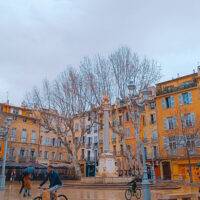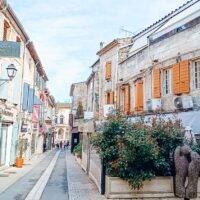The Most Beautiful Places to Visit in Alsace, France

Disclaimer: This post may contain affiliate links, which means that if you click on any of those links and make a purchase, I’ll get a small commission, at no cost to you, to help support this website.
Tucked away in eastern France near the German border, Alsace is one of those regions that feels like it was plucked straight from the pages of a fairytale. Think half-timbered houses with flower-filled balconies, cobblestone streets that wind through colorful villages, and rolling vineyards as far as the eye can see.
Whether you’re sipping crisp white wine in a sun-drenched square, wandering medieval castles, or strolling through Strasbourg’s enchanting old town, Alsace is a dream come true for travelers who love charm, history, and a bit of magic. And did I mention the food? This region’s mix of French and German influence makes for some seriously delicious meals.
I took a 4-day trip to Alsace back in late November to see all of the Christmas markets and decorations. It was truly magical. I visited Strasbourg, Colmar, and all the incredible villages that all feel like a fairy tale.
So if you’ve been dreaming of a slower-paced adventure through storybook towns, scenic countryside, and some of France’s best wine country, Alsace should be at the top of your list.
Why Visit Alsace? (Spoiler: It’s Ridiculously Charming)
Tucked along France’s eastern edge, hugging the German border, Alsace is one of those regions that feels straight out of a fairytale. Picture half-timbered houses with flower-filled windows, cobbled lanes winding through medieval villages, vineyards rolling off into the distance, and enough wine and food to make your heart (and stomach) very happy. It’s where French joie de vivre meets German gemütlichkeit, and somehow, the result is even more magical than you’d expect.
Whether you’re sipping a crisp Riesling in a cozy winstub, wandering through pastel-colored towns like Colmar and Riquewihr, or taking in epic views from castles like Haut-Koenigsbourg, Alsace serves up history, beauty, and serious good vibes in equal measure. Oh, and if you’re visiting during the holidays? Get ready for some of the most enchanting Christmas markets on the planet.
How to Get to Alsace
Getting to Alsace is a breeze.
If you’re coming from Paris, the fastest and easiest way is by high-speed train (TGV). You can hop on at Gare de l’Est and be in Strasbourg in under 2 hours. From there, the rest of Alsace is at your fingertips—Colmar is just 30 minutes away by train, and plenty of charming villages are within a short drive.
Flying in? Strasbourg has a small international airport, but you’ll find more connections (and often cheaper flights) into nearby EuroAirport Basel-Mulhouse-Freiburg, which is about an hour from Colmar by car or train. Frankfurt and Zurich are also options if you’re doing a bigger European trip.
Driving in? Lucky you—Alsace is made for road tripping. The Alsace Wine Route is one of the prettiest drives in France, dotted with vineyards, hilltop castles, and postcard-perfect villages around every bend.
How to Get Around Alsace
Once you’re in Alsace, getting around is part of the adventure. If you’re sticking to the bigger towns—like Strasbourg, Colmar, and Sélestat—trains and buses can do the trick. The regional TER trains are efficient and scenic, and they link up the main hubs pretty easily.
But if you’re hoping to explore the storybook villages, cruise along the Alsace Wine Route, or visit castles perched on hilltops, renting a car is the way to go. Having your own wheels gives you the freedom to stop wherever and whenever you like—trust me, you’ll want to pull over often for photos and pastries.
You’ll find public buses going to the villages from bigger towns, but you’ll waste time going back and forth – so it’s doable, but you’ll either need more time or have to skip places.
That said, biking is also a big thing in Alsace! There are tons of well-marked cycling routes, especially around the vineyards and flatter areas between towns. It’s a slow and beautiful way to soak up the atmosphere.
Best Time to Visit Alsace
Alsace is one of those magical places that looks good in every season—but the vibe totally changes depending on when you go.
If you’re dreaming of vineyard strolls, sunny days, and colorful half-timbered houses draped in flowers, late spring (May–June) and early fall (September–October) are absolute perfection. The weather’s mild, the crowds are smaller, and the wine harvest season brings the whole region to life.
Summer (July–August) is also lovely, especially for festivals and outdoor dining, but it’s the busiest time, so expect a few more tourists.
And if you’re a sucker for Christmas magic, winter is the time. From late November through December, Alsace turns into a twinkly fairy tale with its famous Christmas markets—especially in Strasbourg and Colmar.
How to Plan Your Itinerary
I’d recommend spending at least 3 days in Alsace, with one day to explore Strasbourg and 2 days to visit the villages. Villages are pretty close to each other, so you won’t spend much time driving unless you want to go for a ride through the countryside.
I’ve listed the places below in the order I visited them, so you can just follow along this itinerary.
Best Places to Visit in Alsace
Strasbourg
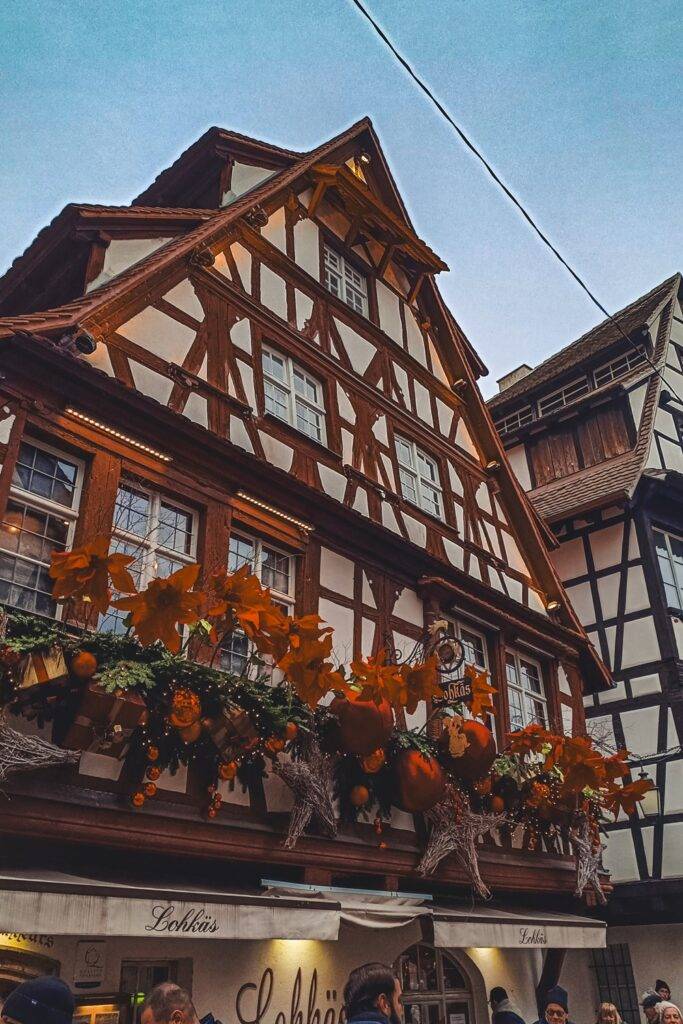
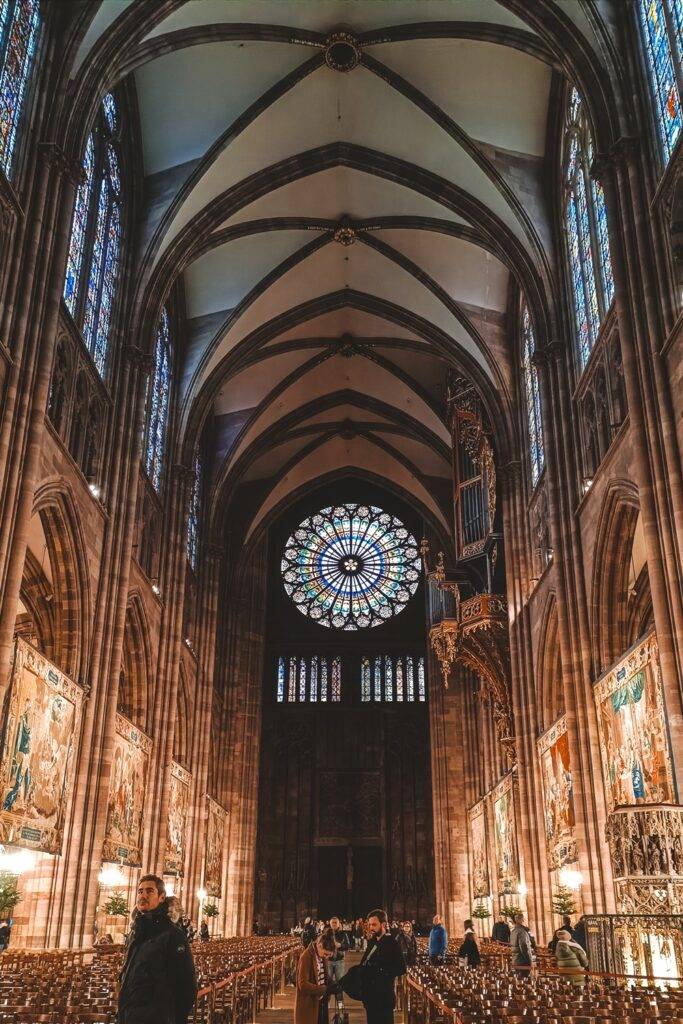

Strasbourg is the beating heart of Alsace—where French charm meets German influence in the prettiest way possible.
Wander through the cobbled lanes of the Grande Île, a UNESCO World Heritage Site, and don’t miss the jaw-dropping Strasbourg Cathedral, whose intricate spire seems to touch the sky. The Petite France district is like stepping into a fairy tale, with timber-framed houses lining peaceful canals. Hop on a boat tour, grab a kougelhopf from a local bakery, or sip Alsatian wine in one of the cozy winstubs.
Strasbourg also has a cool, cosmopolitan side, with museums, modern art, and the European Parliament all in the mix. It’s the perfect base and intro to Alsace’s unique blend of culture.
Obernai



If Strasbourg is Alsace’s heart, Obernai might just be its soul. This postcard-perfect town is all about medieval charm, with colorful half-timbered houses, flower-filled balconies, and cobbled streets made for slow strolling.
The main square, Place du Marché, is a delight, surrounded by historic buildings and a daily rhythm that feels frozen in time (in the best way). You’ll find cozy wine bars, artisan shops, and views of the Vosges Mountains in the distance.
It’s also a great place to dive into Alsatian traditions, from local folklore to hearty tarte flambée. Bonus: it’s just a short hop from Strasbourg, making it an easy and adorable day trip—or a quieter base if you’re looking for that small-town vibe.
Getting there without a car: there’s a train running frequently from Strasbourg.
Sélestat



Often overlooked but totally worth the stop, Sélestat is a small town with some seriously big history. It’s home to one of the oldest public libraries in Europe—talk about bookish bragging rights—and a rich cultural heritage that blends Gothic, Romanesque, and Renaissance architecture all in one stroll.
The Humanist Library is a must-see (even if you’re not a history buff), and the Église Sainte-Foy and Église Saint-Georges show off the town’s architectural flair.
Sélestat also has a playful side—especially in summer when flower displays and festivals bring the streets to life. It’s a charming, laid-back stop between Strasbourg and the wine route villages, and a great way to dig a little deeper into Alsace’s past.
Getting there without a car: trains run frequently from Obernai and Strasbourg
Kintzheim


Tucked between vineyards and forested hills, Kintzheim feels like it was plucked straight out of a fairy tale. This tiny village is best known for its wildlife parks and hilltop castle.
Head up to the Volerie des Aigles (Eagle Park) to watch majestic birds of prey soar over the ruins of Château de Kintzheim—it’s part medieval magic, part nature show, and totally unforgettable.
Just next door, La Montagne des Singes (Monkey Mountain) lets you walk among free-roaming Barbary macaques in a peaceful forest setting. It’s a fun and unexpected stop, especially if you’re traveling with kids—or if you’re just a kid at heart.
Getting there without a car: buses from Sélestat run every 40 minutes.
Château du Haut-Koenigsbourg



Perched dramatically on a rocky outcrop, Château du Haut-Koenigsbourg looks like it was made for movie sets—and honestly, it kind of was (hi there, Game of Thrones vibes!).
This fully restored medieval fortress offers sweeping views over the Alsace plain, the Black Forest, and even the Alps on a clear day. Inside, it’s a deep dive into the past, with drawbridges, knightly halls, and weapon collections that’ll make history lovers swoon.
Whether you’re geeking out over cannons or just soaking up the epic views, this castle is a must for anyone doing the Alsace road trip circuit.
Getting there without a car: take bus 500 from Kintzheim or Sélestat (one every hour)
Bergheim

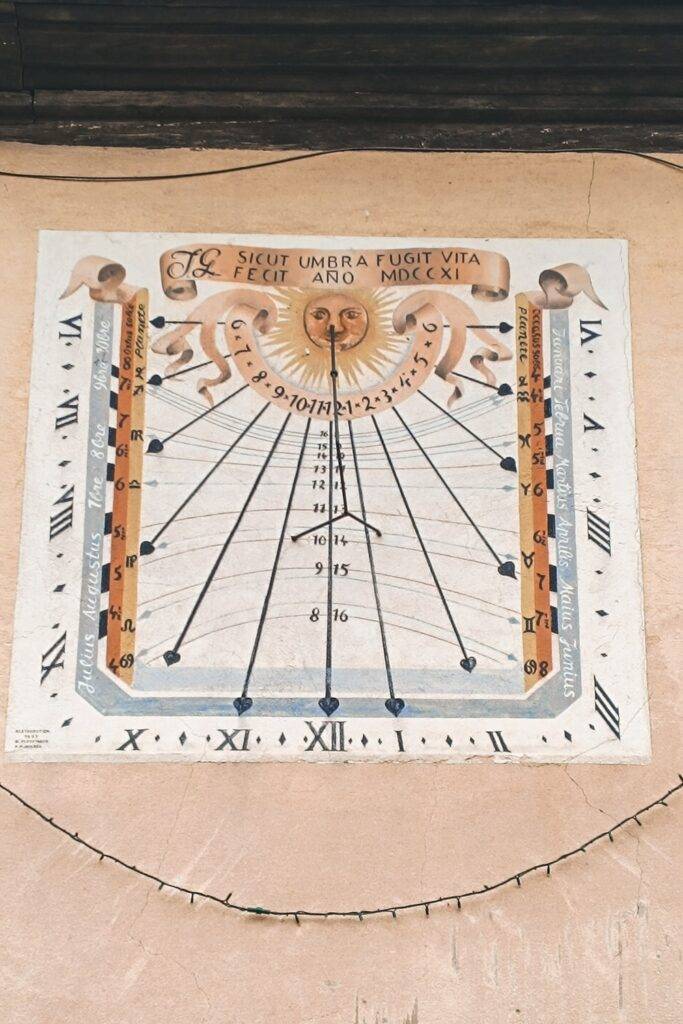

Bergheim is one of those hidden gems that somehow still flies under the radar—lucky for us! This charming walled village is all cobbled lanes, half-timbered houses, and blooming flower boxes. It’s less touristy than its famous neighbors but just as pretty, with a peaceful, authentic vibe that’s perfect for a leisurely stroll.
Don’t miss the medieval ramparts (you can actually walk part of them), and if you’re into wine, Bergheim is surrounded by vineyards producing top-notch Alsatian wines.
Getting there without a car: frequent trains from Sélestat.
Ribeauvillé


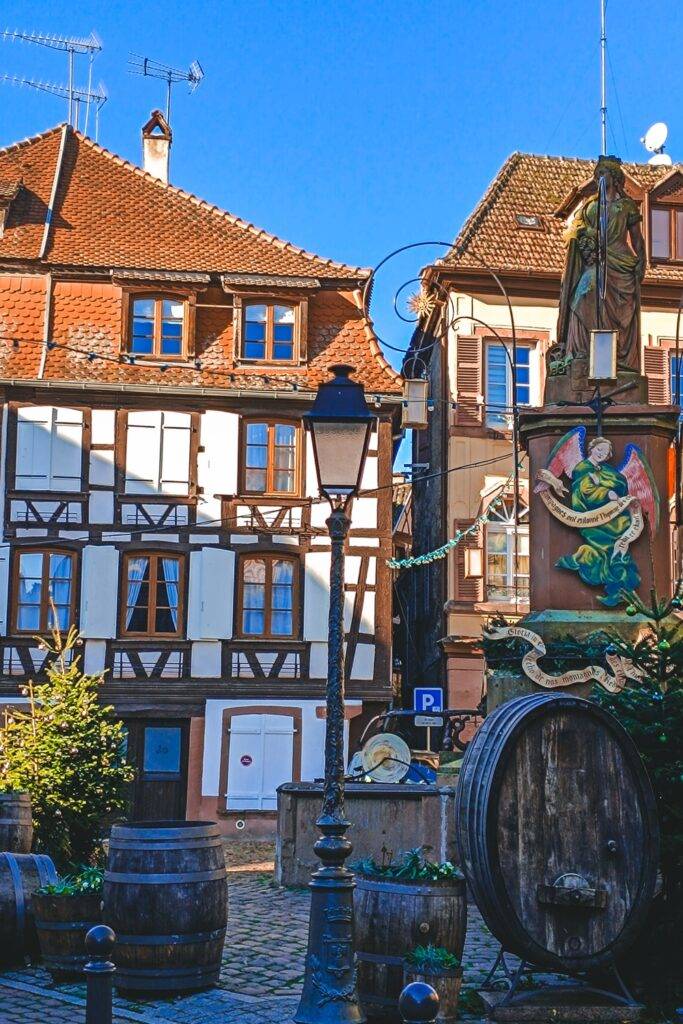
Ribeauvillé is the kind of fairytale village that looks like it was plucked straight out of a storybook—complete with pastel-painted houses, medieval towers, and vineyard-covered hills all around.
The main street is a delight to wander, lined with shops, wine bars, and cafés that practically beg you to sit and linger. If you’re feeling adventurous, take the uphill trail to visit the trio of ruined castles (yes, three!) that overlook the town—Château Saint-Ulrich, Girsberg, and Haut-Ribeaupierre. It’s a bit of a hike, but the views and the castle vibes are totally worth it.
Getting there without a car: frequent trains from Sélestat and Bergheim
Riquewihr



Riquewihr is often dubbed one of the prettiest villages in France—and once you step inside its medieval walls, you’ll quickly see why. The half-timbered houses are so vibrant and beautifully preserved that the whole place feels like a movie set (or a Christmas village come to life). Every corner is a postcard waiting to happen, and the cobbled streets are lined with boutiques, winstubs (Alsatian taverns), and tasting rooms.
Don’t miss the Dolder Tower and the old city walls for a bit of history with your wander.
Getting there without a car: Take bus 68R016 from Ribeauvillé or Colmar.
Kaysersberg



Kaysersberg is the kind of place that makes you want to slow down, breathe in the fresh mountain air, and snap about a hundred photos an hour. Nestled in a lush valley with a castle ruin perched above, this village blends medieval charm with Alsatian flair.
The colorful half-timbered houses, flower-filled balconies, and gentle river flowing through town make it irresistibly picturesque.
Climb up to the Château de Kaysersberg for sweeping views or stroll through the old town, popping into artisan shops and cozy cafés along the way. It’s calm, romantic, and just the right amount of sleepy—in the best possible way.
Getting there without a car: Take bus 68R013 from Colmar.
Colmar



Colmar looks like it was plucked straight out of a storybook and sprinkled with extra charm. Often called the “Little Venice” of Alsace, this town is a dreamy patchwork of pastel houses, winding canals, and cobblestone streets.
The historic center is a joy to explore, from the timbered houses of the Quartier des Tanneurs to the lively covered market and the scenic canals of La Petite Venise.
Art lovers shouldn’t miss the Unterlinden Museum, home to the famous Isenheim Altarpiece.
Whether you’re wandering with a camera or sipping a glass of local Gewürztraminer at a sunny café, Colmar always feels magical.
Eguisheim

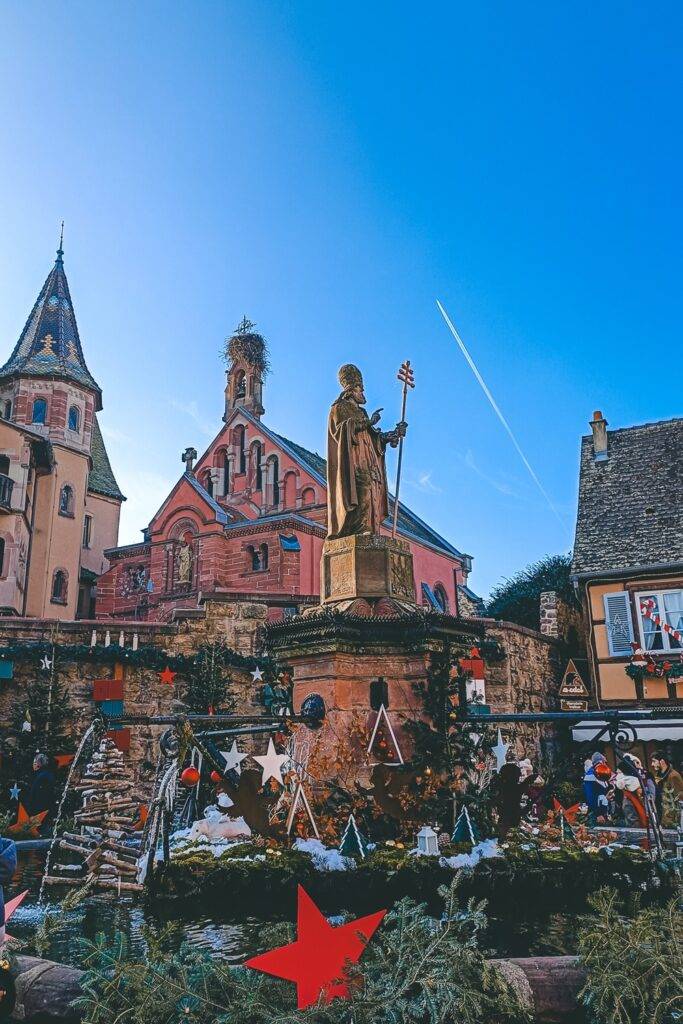

Eguisheim is the kind of village that makes you stop in your tracks and go, “Wait, is this real?” With its concentric circles of colorful half-timbered houses, flower-filled balconies, and cobbled lanes, it’s basically the definition of picturesque.
Often voted one of the most beautiful villages in France, Eguisheim is small but packed with charm. Wander the ring-shaped streets, sample some local wines (this is Alsace, after all!), and soak in the slow, fairytale pace. It’s a place where you’ll want to linger just a little longer—maybe even forever.
Getting there without a car: Take bus R030 from Colmar
The Alsace Wine Route
If you’re looking for the quintessential Alsace experience, you can’t miss the legendary Alsace Wine Route (Route des Vins d’Alsace). This scenic drive winds through rolling vineyards, fairytale villages, and postcard-worthy landscapes from Marlenheim to Thann.
Whether you rent a car for the flexibility or join a guided wine tour for expert insight (and zero worries about who’s driving), it’s an unforgettable way to explore the region’s charm—and taste plenty of crisp Rieslings, aromatic Gewürztraminers, and other local favorites along the way.
There are so many lovely vineyards along the Alsace Wine Route, but here are some standout ones for tastings—whether you’re into crisp whites, biodynamic practices, or historic family-run domaines. These spots are scattered along the route, so you can sprinkle them into your itinerary as you go:
- Domaine Weinbach (Kaysersberg) – An iconic, family-run estate set in a former Capuchin monastery. Known for their elegant Rieslings and Gewürztraminers, it’s a must-visit for serious wine lovers.
- Domaine Marcel Deiss (Bergheim) – Famous for embracing field blends and biodynamic practices. Tastings here often include a deep dive into terroir and traditional Alsace varietals.
- Maison Trimbach (Ribeauvillé) – A legendary name in Alsace wine, this family estate has been producing top-notch Riesling for nearly four centuries. Classic and consistently excellent.
- Domaine Paul Blanck (Kientzheim) – Friendly, down-to-earth, and full of great wines across the spectrum. A great stop if you’re looking for both quality and a warm welcome.
- Domaine Bott-Geyl (Beblenheim) – A small but innovative biodynamic producer with expressive wines and a strong focus on sustainability. Tastings here often include lesser-known varietals, too.
- Au Péché Vigneron (Gertwiller) – Great for a more immersive experience, they offer cellar tours and tastings with food pairings in a cozy setting. They even have a wine bar and shop on site.
- Domaine Schlumberger (Guebwiller) – One of the largest private vineyards in Alsace, with stunning steep-slope plots. A good stop in the southern part of the wine route.
Must-Try Food & Wine in Alsace
If you’re into food, Alsace is going to treat you very well. The local cuisine is hearty, flavorful, and a delicious blend of French finesse and German comfort food. One of the must-try dishes is choucroute garnie—a generous plate of sauerkraut piled high with sausages and smoked meats. Feeling cozy? Go for flammekueche (aka tarte flambée), a thin crust topped with crème fraîche, onions, and lardons, best enjoyed hot out of a wood-fired oven.
And don’t even think about leaving without trying a bretzel—the Alsatian cousin of the pretzel, often enjoyed with mustard or cheese. For something sweet, grab a slice of kougelhopf, a light, yeasted cake baked in a bundt-style mold and dusted with powdered sugar. During the holidays, Alsace goes full festive with its bredele (Christmas cookies) and spiced pain d’épices.
On the wine front, Alsace is a dream for white wine lovers. The region is famous for its Riesling, Gewürztraminer, and Pinot Gris, and many villages sit right along the Alsace Wine Route, dotted with tasting rooms and cellar doors. Whether you’re popping into a small family-run winery or a bigger domain, you’ll be met with warm hospitality—and probably leave with a few bottles tucked under your arm.
Final Thoughts
Alsace is the kind of place that sneaks up on you—in the best way. It’s not as flashy as Paris or as sun-soaked as Provence, but it charms you slowly and deeply, one cobbled street and glass of Riesling at a time. From the Gothic grandeur of Strasbourg to the pastel perfection of Eguisheim, every stop along the way has something special to offer.
Whether you’re planning a scenic road trip along the Alsace Wine Route, hopping between cozy villages by train, or diving into the hearty local cuisine, you’ll find yourself falling hard for this little corner of France. Go for the views, stay for the wine—and don’t forget your appetite!
Save it on Pinterest for later:







